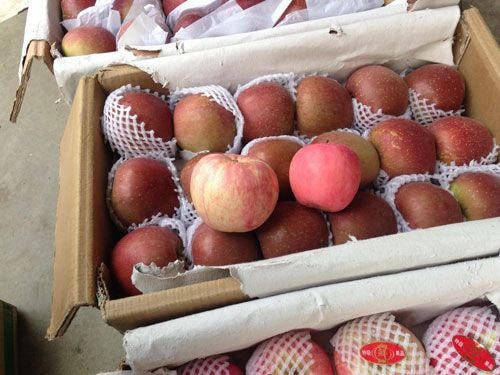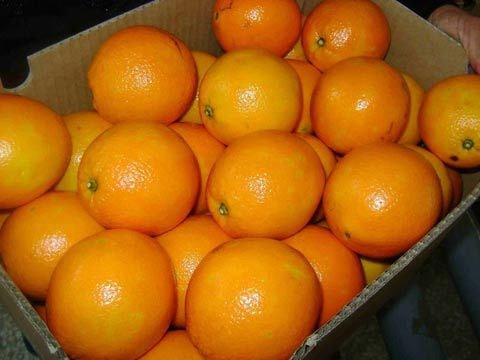How to identify Chinese apples and oranges soaked in chemicals
Choosing to buy the right Vietnamese apples and oranges, not choosing Chinese fruit soaked in toxic chemicals is not too difficult, but not everyone knows how.
Apple
Apples are a very popular fruit, especially with children, but the current situation of apples of unknown origin being sold widely in the market has made many housewives more cautious with this fruit.
 |
| Chinese apples are usually round, smooth, shiny, and wrapped in foam mesh. |
Chinese apples are usually round, smooth, shiny, and wrapped in a styrofoam net. When the net is removed, many fine white seeds will appear on the fruit, which is due to the evaporation of preservatives from the skin.
Orange
In Vietnam, Chinese oranges are also divided into two types: yellow oranges and green oranges. On the outside, Chinese oranges have smooth, flawless skin, long-lasting color and no seeds. Chinese yellow oranges have a very distinctive lemon yellow or orange color. The green oranges are also green like the oranges of the West but are lighter in color, very shiny and have thick skin.
 |
| Chinese oranges have bright, shiny colors and smooth skin. |
In addition, when sold, Chinese oranges also have stems but the color is a bit dark and falls off easily, the stems are not as strong as Western oranges. Because they can be soaked in preservatives and fast-growing chemicals, Chinese orange leaves are often very young and light in color. When the orange is cut, the flesh is a bit pale in color and has no aroma. In particular, varieties originating from China are seedless, have a strong sweet taste and the segments have a slightly rotten taste.
How to identify Vietnamese oranges
Vietnamese oranges, including Ha Giang oranges and Sanh oranges, all have rougher and thicker skin, often have brown spots, are less attractive, and all have seeds. Ha Giang oranges have seeds, are yellow when ripe, have thick flesh, and are sweet and aromatic. Canh Sanh oranges are round, have quite large fruit, have thick, rough, and rough skin, and are dark green but uneven in color.
Some fruits have a tan color, not very attractive. Meanwhile, the orange juice has a much smaller shape than the orange, the orange peel is lighter green, thinner, the fruit shape is not round, dented but squeezes out a lot of juice.
Consumers should not buy fruits that are bruised or mushy at the tip, even if the skin is still beautiful. When buying fruits, pay attention to any unusual phenomena such as fruit that is too young, green, ripe, or unusually beautiful, as these may contain pesticides. Any fruit purchased must be thoroughly washed and peeled before use.
According to Alobacsi.vn






